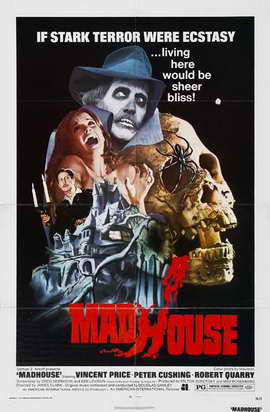
Peter Toombes (pun very much intended) had become a giant star making horror movies in the 50’s and 60’s and was most famous for playing his signature character Dr. Death, portrayed by the one-and-only Vincent Price. At a New Year’s Eve party, however, tragedy strikes and he shrinks away from the public eye and puts aside Dr. Death for good. 12 years later and old friend and colleague, played by the incomparable Peter Cushing, convinces him to movie to England and reprise the role for a British TV series. He agrees and both the accolades and the tragedies seem to pick right up where they left off. At this stage in his career, Vincent Price was sick of horror. In fact, he hated the direction the new generation of horror filmmakers were taking the genre. Rather than try and emulate them, the fantastic Mr. Price made this piece in a very classic style and commented on the new wave in subtle ways, through monologues and roles for heartless producers. He also used the story to comment on himself. Here is someone, like himself, sick of doing this but finding himself doing horror once again, and, so, the question becomes will Peter use this opportunity to be a hero or a victim?
If there is one thing that separates old horror from the new generation of horror (and by old and new I don’t mean anything in the present day, but rather the pre-70’s horror and the horror genre birthed by people like Wes Craven, George Romero and John Carpenter in the 70’s) it is the type of the weight of the threat posed by the villain. In fact, one might say it boils down to movies being creepy versus scary. For example, this movie, to me, played more like a whodunit with some fantastically creepy atmosphere, but it wasn’t scary at all, not a single frame of it. granted, I’m not easily scared by movies (I find horror more fun than scary), but this movie feels more like old Hollywood with it’s grand score and classically trained actors than it does anything resembling a harrowing tale of the evils of some demented mind. That said, I enjoyed this movie immensely. I find it very hard to dislike a Vincent Price vehicle and throw in Peter Cushing and you have a near guarantee I will like it. This movie contains classic Price monologues and Cushing coldness.
ME

